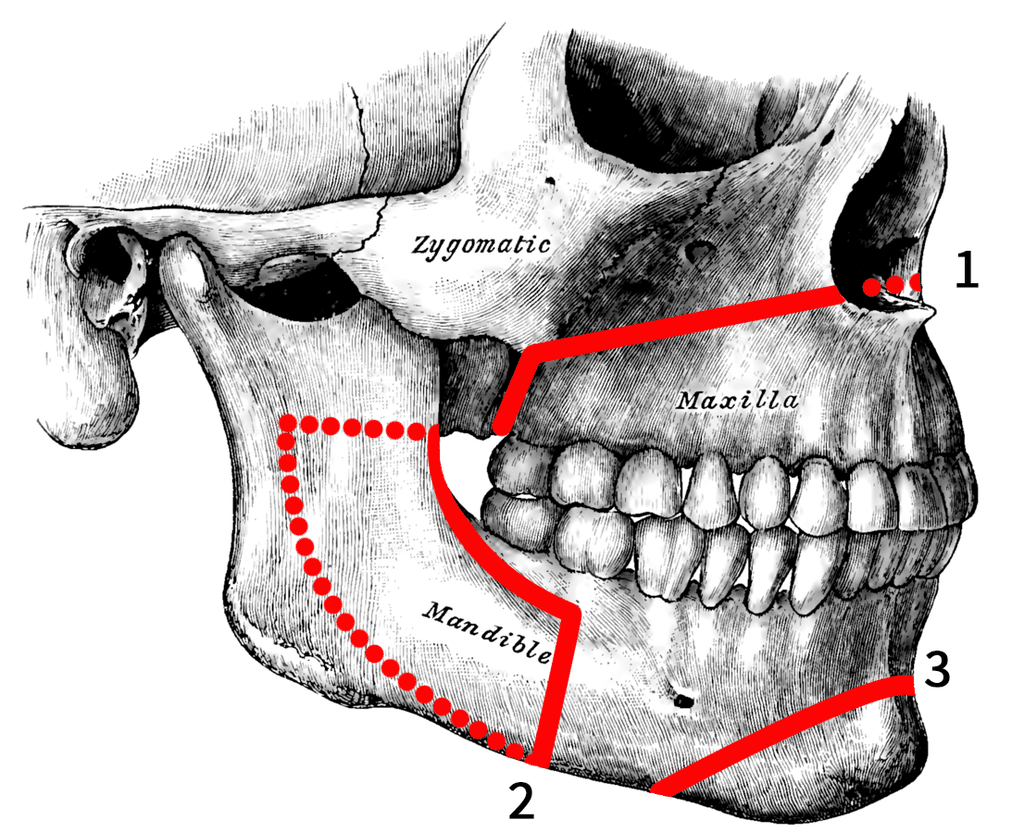Jaw revision surgery can be a life-changing procedure, helping individuals regain confidence and alleviate discomfort. However, recognizing the early warning signs of potential issues can save patients from unnecessary discomfort and complications. In this article, we explore the common signs that indicate the need for jaw revision surgery, empowering readers to take proactive steps towards early intervention.
From persistent jaw pain and difficulty chewing to changes in bite alignment, these warning signs should not be ignored. Brandishing a keen needle for diagnosing underlying issues, our team of experts is well-equipped to guide you through the signs and symptoms that warrant a closer look.
By understanding these early signs, patients can seek timely medical attention, potentially averting more intensive and invasive procedures in the future. Our goal is to equip you with the knowledge and tools to recognize when it might be necessary to explore revision surgery, ensuring the best possible outcome for your oral health and overall well-being. Say goodbye to jaw discomfort and hello to a harmonious bite – read on to learn more about the early warning signs of jaw revision surgery.
Common reasons for jaw revision surgery
Jaw revision surgery is often recommended for individuals who have previously undergone orthognathic surgery, commonly known as corrective jaw surgery. While the initial surgery aims to correct facial and jaw irregularities, such as misaligned jaws or skeletal discrepancies, there are instances where revision surgery may be necessary. Some common reasons for jaw revision surgery include:
1. Relapse: In some cases, the jaw may shift back to its original position after the initial surgery. This can occur due to various factors, such as incomplete healing, improper stability, or a natural tendency of the jaw to move over time.
2. Functional issues: Occasionally, patients may experience persistent jaw pain, difficulty chewing, or problems with bite alignment even after the initial surgery. These functional issues can significantly impact a person’s quality of life and may require further intervention.
3. Aesthetic concerns: While aesthetic improvements are typically achieved during the initial orthognathic surgery, some individuals may have residual aesthetic concerns or desire further refinement. Jaw revision surgery can help address these cosmetic issues and enhance facial harmony.
Early warning signs of jaw problems
It is crucial to be aware of the early warning signs that may indicate the need for jaw revision surgery. By recognizing these signs, individuals can seek timely medical attention, potentially averting more intensive and invasive procedures in the future. Here are some common early warning signs of jaw problems:
1. Persistent jaw pain: If you experience persistent or worsening jaw pain that does not respond to conservative treatments such as pain medication or physical therapy, it may be a sign of an underlying issue that requires further evaluation.
2. Difficulty chewing or speaking: Problems with chewing or speaking can be indicative of jaw misalignment or dysfunction. If you find it challenging to bite, chew, or articulate your words, it is crucial to have your jaw assessed by a qualified professional.
3. Changes in bite alignment: If you notice a sudden change in your bite alignment, such as an overbite, underbite, or crossbite, it could indicate an issue with your jaw. Changes in bite alignment can affect your ability to eat, speak, and even cause facial asymmetry.
4. Jaw clicking or popping: While occasional jaw clicking or popping may not be a cause for concern, persistent or painful clicking should not be ignored. It may be a sign of temporomandibular joint (TMJ) disorder or other jaw-related problems.
Physical symptoms of jaw revision surgery
Jaw revision surgery is a complex procedure that requires careful consideration and planning. While the specific physical symptoms may vary depending on the individual case, here are some common physical symptoms associated with jaw revision surgery:
1. Swelling and bruising: Similar to the initial orthognathic surgery, jaw revision surgery may result in temporary swelling and bruising around the face and jawline. This is a normal part of the healing process and typically subsides within a few weeks.
2. Numbness or tingling: It is not uncommon to experience temporary numbness or tingling sensations in the face, lips, or chin following jaw revision surgery. This is usually due to nerve manipulation during the procedure and should gradually improve over time.
3. Restricted diet: During the initial recovery period, individuals may need to follow a soft or liquid diet to allow the jaw to heal properly. This may involve consuming foods such as soups, smoothies, and mashed potatoes until the jaw is sufficiently healed.
4. Limited jaw mobility: In the immediate post-operative period, individuals may experience limited jaw mobility and difficulty opening their mouths wide. This is normal and expected, but it should gradually improve as the jaw heals and physical therapy is implemented.
Psychological signs of jaw revision surgery
While jaw revision surgery primarily focuses on addressing physical issues, it is essential to recognize the potential psychological impact of the procedure. Here are some psychological signs that individuals may experience before or after jaw revision surgery:
1. Body image concerns: Individuals who undergo jaw revision surgery may have pre-existing body image concerns or develop new ones during the treatment process. It is important to address these concerns and seek support from loved ones or mental health professionals, if necessary.
2. Anxiety and stress: Jaw revision surgery can be a significant life event, and it is not uncommon for individuals to experience anxiety and stress leading up to the procedure or during the recovery period. Open communication with healthcare providers and a strong support system can help alleviate these feelings.
3. Emotional adjustment: Adjusting to the physical changes and recovery process after jaw revision surgery can be emotionally challenging. It is normal to experience a range of emotions, including frustration, impatience, and even occasional sadness. Talking to others who have gone through similar experiences or joining support groups can provide valuable emotional support.
Importance of early detection and intervention
Early detection and intervention are crucial when it comes to jaw revision surgery. By recognizing the signs and symptoms early on, individuals can seek appropriate medical attention and potentially prevent more extensive procedures in the future. Here are some reasons why early detection and intervention are important:
1. Prevention of further complications: Identifying jaw issues in their early stages allows for timely intervention, preventing the progression of complications and potentially reducing the need for more invasive procedures.
2. Improved treatment outcomes: Addressing jaw problems early can lead to better treatment outcomes. By seeking prompt medical attention, individuals can receive appropriate care tailored to their specific needs, increasing the chances of a successful outcome.
3. Enhanced quality of life: Jaw problems can significantly impact a person’s quality of life, affecting their ability to eat, speak, and socialize comfortably. Early detection and intervention can help restore normal jaw function, alleviating pain and discomfort, and improving overall well-being.
Steps to recognize and address early warning signs
Recognizing and addressing the early warning signs of jaw revision surgery is essential for timely intervention. Here are some steps individuals can take to recognize and address these signs:
1. Educate yourself: Learn about the potential warning signs and symptoms of jaw problems. Educating yourself about common indicators can help you identify them early and seek appropriate medical attention.
2. Regular dental check-ups: Schedule regular dental check-ups and inform your dentist about any concerns or changes you have noticed in your jaw. Dentists are trained to identify and address jaw-related issues and can refer you to a specialist if necessary.
3. Consult with a specialist: If you experience persistent or worsening symptoms, consult with a qualified oral and maxillofacial surgeon. These specialists have expertise in diagnosing and treating jaw-related problems and can provide appropriate guidance and treatment options.
4. Follow recommended treatment plans: If jaw revision surgery is recommended, it is essential to follow the recommended treatment plan. This may include pre-operative assessments, surgical procedures, post-operative care, and physical therapy. Adhering to these guidelines can maximize the chances of a successful outcome.
Treatment options for jaw revision surgery
When it comes to jaw revision surgery, there are various treatment options available, depending on the specific needs of each individual. Here are some common treatment options for jaw revision surgery:
1. Orthognathic surgery: Orthognathic surgery is a common treatment option for individuals requiring jaw revision surgery. This procedure involves repositioning the jawbones to achieve proper alignment and function.
2. Bone grafting: In some cases, bone grafting may be necessary to augment or support the jawbones during revision surgery. This procedure involves transplanting bone tissue from another part of the body or using synthetic materials to enhance bone structure.
3. TMJ surgery: If the jaw problems are primarily related to temporomandibular joint (TMJ) dysfunction, TMJ surgery may be recommended. This procedure aims to address issues such as joint pain, clicking, or limited jaw movement.
4. Cosmetic refinements: In certain cases, jaw revision surgery may involve cosmetic refinements to improve facial symmetry and aesthetics. These refinements can be tailored to the individual’s preferences and desired outcomes.
Recovering from jaw revision surgery
Recovering from jaw revision surgery requires patience, dedication, and adherence to post-operative guidelines. While the specific recovery process may vary depending on the individual case, here are some general tips for a smooth recovery:
1. Follow post-operative instructions: Strictly adhere to the post-operative instructions provided by your surgeon. This may include taking prescribed medications, attending follow-up appointments, and following dietary restrictions.
2. Manage pain and swelling: Use prescribed pain medications and apply ice packs as directed to manage pain and reduce swelling. It is normal to experience some discomfort during the initial recovery period, but proper pain management can help alleviate it.
3. Practice good oral hygiene: Maintain good oral hygiene by gently brushing your teeth and rinsing your mouth with a prescribed mouthwash. Follow your surgeon’s instructions on when to resume regular oral care routines.
4. Gradually reintroduce solid foods: Begin with a soft or liquid diet as advised by your surgeon, gradually reintroducing solid foods as your jaw heals. Chewing on the unaffected side of your mouth can help minimize strain on the surgical site.
5. Attend physical therapy: If recommended by your surgeon, attend physical therapy sessions to improve jaw mobility and strengthen the surrounding muscles. Physical therapy can help optimize your recovery and restore normal jaw function.
Conclusion: Taking proactive steps for jaw health
Recognizing the early warning signs of jaw revision surgery is essential for timely intervention and optimal treatment outcomes. By staying informed, seeking appropriate medical attention, and following the recommended treatment plans, individuals can take proactive steps towards maintaining jaw health and overall well-being. Remember, jaw revision surgery can be a transformative procedure, offering relief from discomfort and restoring confidence. By recognizing the signs and symptoms early on, you can take control of your oral health and pave the way for a harmonious bite and a brighter future.






